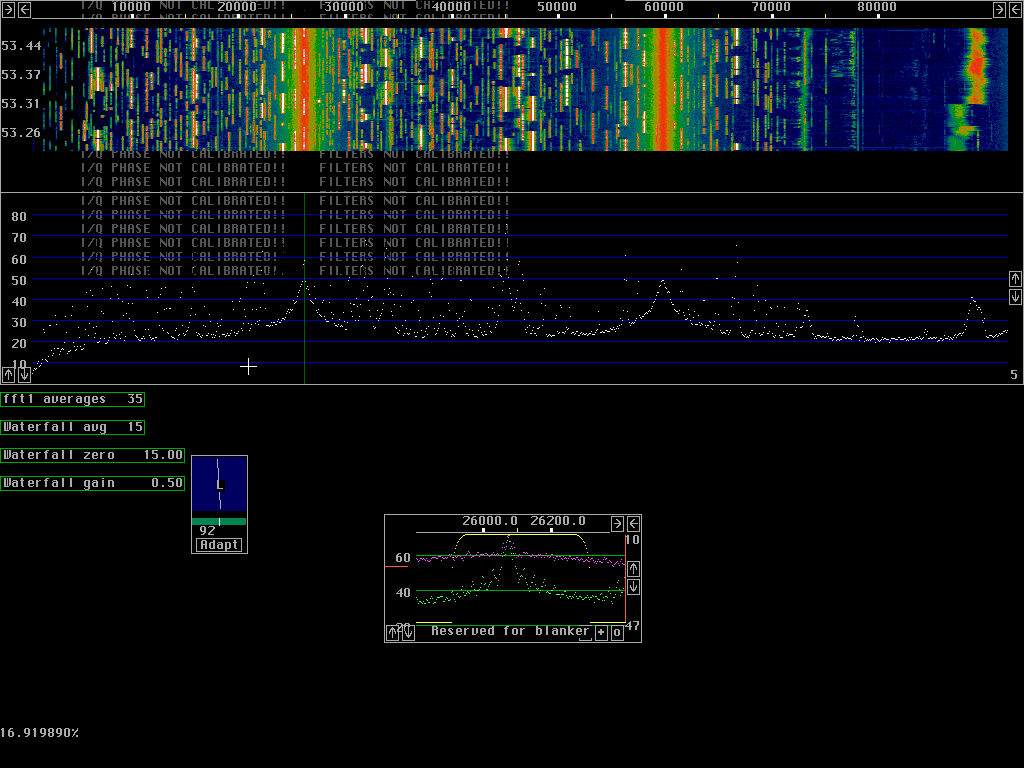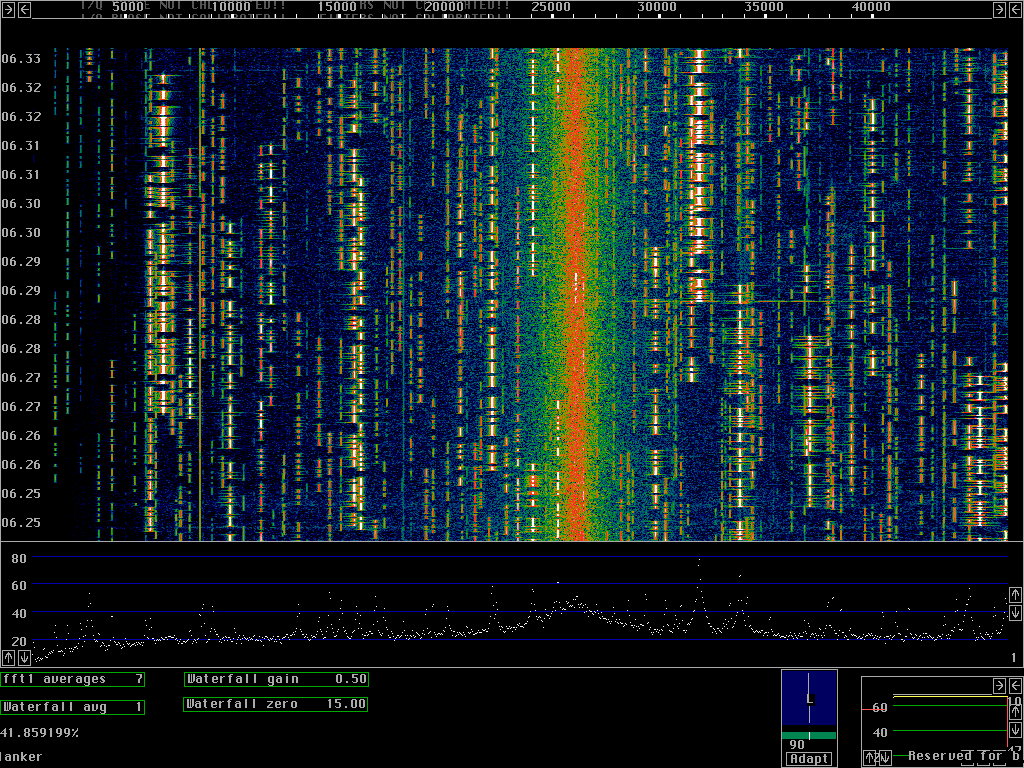|
The archive file
hf2.tbz 12 396 677 bytes
is compressed with bzip2.
Uncompress it with bunzip2 to get hf2.tar:
bunzip2 hf2.tbz and create the hf2 directory and its contents with tar: tar xvf hf2.tar The hf2 directory contains hf2.raw and all the setup files used by the dsp program. Copy the program file and dsp.errors (old name errors.dat) to the eme directory and run the program. Press H to run the recorded data. Do not try any other mode, the parameters will most probably not fit your hardware. The display should produce the screen of fig.1 during the about 30 seconds playing time. Click on a signal with the mouse. Read mouse_on_graph.txt for more info. Listen to all the different signals and play with the polarisation and bandwidth adjustments. The parameters are selected for small load on your computer. Try to enable second fft the % number in the lower left corner seems to indicate it will be possible. Use backfft version 1 if you have MMX. Fig.2 shows the same data without averaging in the waterfall graph. It is obviousely possible to decode a very large number of stations in parallel (if the screen was big enough for all the data)
|

